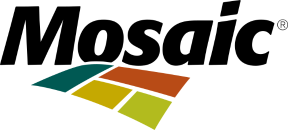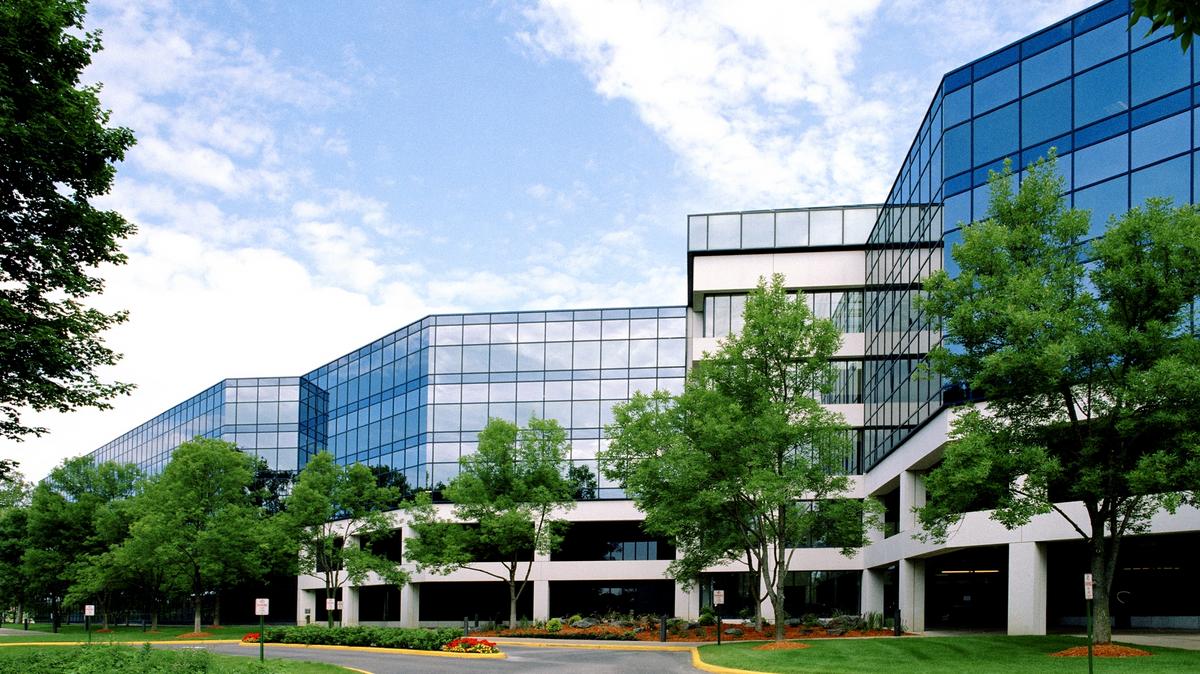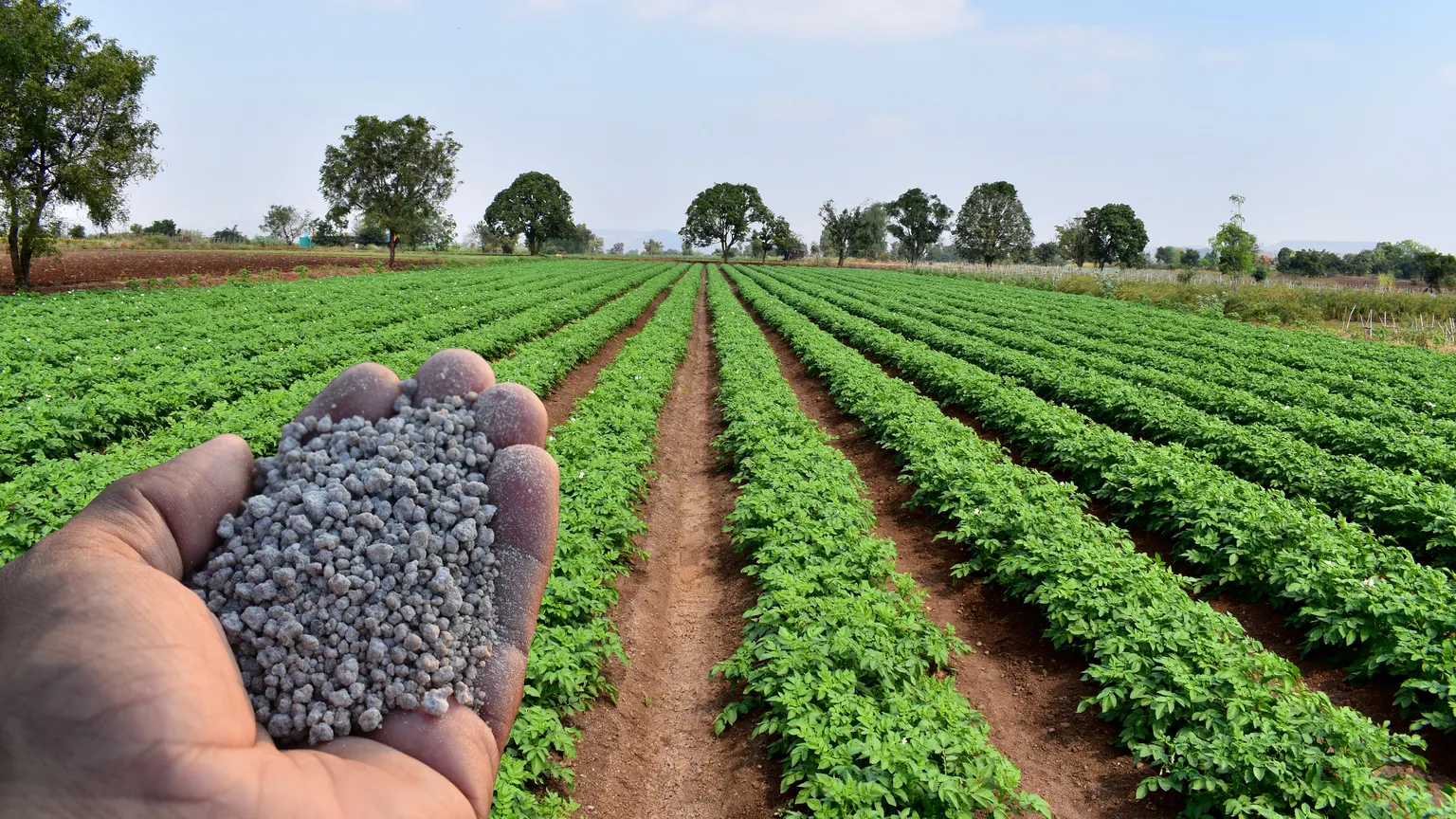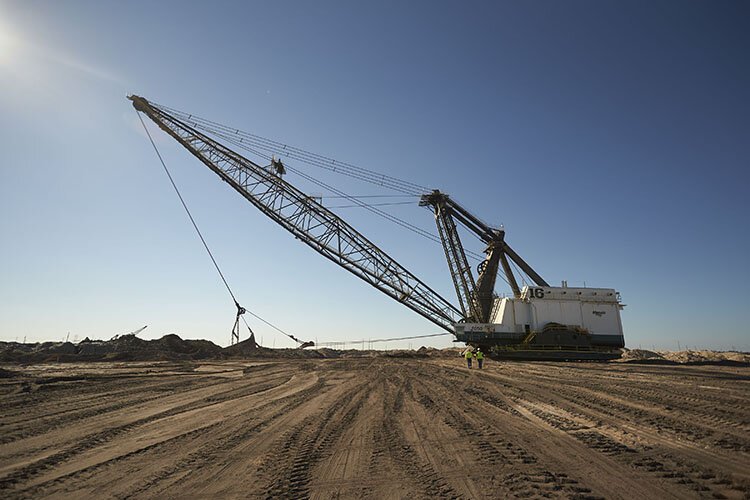The Mosaic Company
Summary
- Mosaic Company is a producer of potash, phosphates and other fertilizers, the company operates in Argentina, Brazil, Canada, Chile, India, Thailand, Ukraine and United States.
- History of the company dates back to 2009, but The Mosaic Company was formed in 2004 by the merger of Cargill Inc and IMC Global.
- Mosaic has three business segments - Phosphate, Potash and Mosaic Fertilizer.
- In 2022, revenue of Mosaic Company was $19,125 million, Gross profit was $5,755.80 million and net profit was $3,582.80 million.
- In Q1 2023, revenue was $3604.3 million and gross profit was $670.4 million and net profit was $434.8 million.
Brief Company Overview
 The Mosaic Company (NYSE: MOS) is a mining company that processes phosphate, potash, and other fertilizers. The company is headquartered in Tampa, Florida, USA. At present, the company is the producer of concentrated phosphate and potash—two of the three most important nutrients in agriculture. The company supplies fertilizers for the growth of crops and thus the company is focused to assist farmers to grow food. As of 2023, the company has employed more than 13,000 people globally to assist farmers in growing crops. The company has three segments of products which are phosphates, potash and mosaic fertilizers.1 Some of its product brands are Microessentials, Pegasus, Aspire, K-Mag, BioPath and PowerCoat.2 The customers are farmers and growers, ranging from small hobby farms to big farms. The company is currently headquartered in Tampa, Florida, United States.
The Mosaic Company (NYSE: MOS) is a mining company that processes phosphate, potash, and other fertilizers. The company is headquartered in Tampa, Florida, USA. At present, the company is the producer of concentrated phosphate and potash—two of the three most important nutrients in agriculture. The company supplies fertilizers for the growth of crops and thus the company is focused to assist farmers to grow food. As of 2023, the company has employed more than 13,000 people globally to assist farmers in growing crops. The company has three segments of products which are phosphates, potash and mosaic fertilizers.1 Some of its product brands are Microessentials, Pegasus, Aspire, K-Mag, BioPath and PowerCoat.2 The customers are farmers and growers, ranging from small hobby farms to big farms. The company is currently headquartered in Tampa, Florida, United States.
The company is founded with the assistance of Cargill, Inc. and IMC Global Inc, the founding companies. IMC Global dates back to 1909 when entrepreneur Thomas Meadows became involved in the phosphate mining business. In 1940, the company mined 50,000 tons of potash from its Carlsbad, N.M., plant. IMC Global mined approximately 1.7 million tons in the same location, helping the company earn $2.2 billion in revenue in 2003. In 2004, Cargill Inc announced that it would merge its fertilizer business with IMC Global where Cargill would hold two-thirds of the Mosaic company’s shares and the rest of the shares will be held by IMC Global stockholders. In this way, Mosaic company was formed in 2004.

The company sold 462,000 tons of phosphate in the year 2022 and 782,000 tons of Mosaic Fertilizers. Whereas, the volumes were slightly higher in 2021 which were 553,000 tons and 790,000 tons, respectively. It has followed a ‘Bulk Pricing’ strategy where it provides high-quality fertilizers at an affordable price to the farmers.
The Chief Executive Officer (CEO) of Mosaic Company is James C. O’Rourke who took the responsibility in the year 2015. As of June 2023, the diluted EPS (ttm) of the company is $8.15 and the Return on Equity (ROE) is 24.22%. The number of outstanding shares is 332.11 million. The total market capitalization of the company is $12.05 billion and the trailing P/E ratio is 4.45 times. The net profit margin is 15.08% and the operating profit margin (ttm) is 22.28%.
Recent Developments
- Mosaic returned $608 million to shareholders during the first quarter of 2023 through share repurchases and dividends. Mosaic continues to expect to return largely all of 2023 free cash flow to shareholders.
- In February 2023 Mosaic launches Employee Inclusion Network, a volunteer and leader-sponsored group for fostering diverse a workplace.
- In May 2023, the Mosaic Company announced that it has closed on a new $700 million 10-year term loan facility through the Farm Credit System. This facility provides terms that include a delayed draw option and prepayment with no penalty.
Recent Financing Activities
- In the first quarter of 2022, the Board of Directors approved the establishment of a new $1.0 billion share repurchase authorization, which was completed in the second quarter of 2022. The Board of Directors authorized an additional $2.0 billion share repurchase program in the third quarter of 2022
- During 2022, the company repurchased 30,810,173 shares of Common Stock in the open market for approximately $1.7 billion. This includes the purchase of 7,056,229 shares under an accelerated share repurchase agreement in 2022.
- A debenture issued by Mosaic Global Holdings, Inc., one of the consolidated subsidiaries, due in 2028 (the “2028 Debenture”), is outstanding as of December 31, 2022, with a balance of $147.1 million
Financial Performance Highlights
Q1 2023 Highlights
In Q1, 2023 revenue was $3604.3 million and gross profit was $670.4 million. Also, net profit was $434.8 million. The cash from operations was $149 million and the free cash flow was $191 million. Revenue in the Potash segment totaled $907 million, down from $1.1 billion one year ago. Gross profit was $413 million compared to $579 million for the same period a year ago. Revenue in the Phosphate segment was $1.4 billion, down from $1.5 billion in the prior year period. Gross profit was $259 million, compared to $528 million for the same period a year ago. Revenue in the Mosaic Fertilizantes segment was $1.3 billion, down from $1.5 billion in the prior year period. Gross profit was $(1) million, compared to $219 million for the same period a year ago, primarily as a result of a concerted effort to destock high-cost inventory in the distribution business.
Annual Performance Highlights
In the year ended 30 December 2022, revenue of the company was $19,125 million, Gross profit was $5,755.80 million and net profit was $3,582.80 million.
In the year ended December 30, 2021, revenue was $12,357.4 million, gross profit was $3,200.3 million and net profit was $1,630.60 million. Revenue has increased by 54.77% in 2022 compared to 2021. Also, the gross profit and net profit increased by 79.84% and 119.70%, respectively. The increment in revenue and net profit have been driven by the increase in the sales price of the company’s products. The ongoing Russia-Ukraine along with the reduction of potash exports by Belarus, significantly reduced the physical supply of fertilizer and agricultural commodities. This contributed to rising fertilizer prices globally. In addition, Chinese export restrictions on phosphates also impacted the global supply of fertilizer and contributed to the tightening of the worldwide fertilizer market.3
In the phosphate segment, the revenue of the company in 2022 was $6,184.2 million. Whereas, the gross profit was $ 1,759 million. In 2021, revenue and gross profit were $ $4,922.9 million and $ 1,305.4 million, respectively. Revenue in this segment increased by 26% over the period and the gross profit increased by 35%. The increase in net sales was primarily due to higher average finished goods selling prices. Net sales were also positively impacted by approximately $200 million, primarily due to sales of rock in its Miski Mayo operation and sales of excess ammonia and sulfur in 2022.
In the potash segment, revenue in 2022 was $5,208.5 million and the gross profit was $ 2,843 million. However, in the previous period, revenue and gross profit were $2,626.8 million and $ 1,057.5 million. Revenue increased by 98% and gross profit increased by 169% from previous year. Although the sales of the potash segment volumes decreased slightly to 8.1 million tons, the company has been able to increase its revenue and profit for the increment in selling price.
In the Mosaic Fertilizer segment, revenue in 2022 was $8,287 million and the gross profit was $1,045.6 million. On the other hand, in 2021 revenue was $5,088.5 million and the gross profit was $842.7 million. It is an increase of 63% and 24%, respectively. The increase in net sales was due to higher selling prices, which favorably impacted net sales by approximately $3.2 billion. This was partially offset by a decrease in sales volumes, which impacted net sales by approximately $290 million. Net sales also benefited from the selling prices of other products, primarily acids, and gypsum, which favorably impacted net sales by approximately $200 million, and favorable foreign currency impacts which impacted net sales by approximately $60 million. However, as of June 2023, the EPS was $8.15 (ttm).
Business Overview
The Mosaic Company is a producer and marketer of concentrated phosphate and potash crop nutrients. It operates in the agro-fertilizer industry. The company's primary products include phosphate and potash-based fertilizers, which are essential for increasing crop yields and improving soil fertility. Mosaic fertilizers are used by farmers globally to enhance the growth and productivity of various crops, including corn, wheat, soybeans, and vegetables. In a broad sense, the company has three business segments which are phosphate, potash and mosaic fertilizer
Phosphate Business Segment
The phosphates business segment owns and operates mines and production facilities in Florida, which produce concentrated phosphate crop nutrients and phosphate-based animal feed ingredients, and processing plants in Louisiana which produce concentrated phosphate crop nutrients. Also, the company has a 75% economic interest in the Miski Mayo Phosphate Mine in Peru (“Miski Mayo Mine”), which is included in the results of the Phosphates segment. The Phosphates segment also includes the company’s 25% interest in the Ma’aden Wa’ad Al Shamal Phosphate Company (“MWSPC”), a joint venture to develop, own and operate integrated phosphate production facilities in the Kingdom of Saudi Arabia. Mosaic markets approximately 25% of the MWSPC phosphate production. It recognizes its equity in the net earnings or losses relating to MWSPC on a one-quarter reporting lag in its Consolidated Statements of Earnings.

U.S. Phosphate operations have the capacity to produce approximately 4.5 million tons of phosphoric acid (“P O ”) per year, or about 7% of the world annual capacity and about 60% of North American annual capacity. P O is produced by reacting finely ground phosphate rock with sulfuric acid. P O is the key building block for the production of high-analysis or concentrated phosphate crop nutrients and animal feed products and is the most comprehensive measure of phosphate capacity and production and a commonly used benchmark in the industry. U.S. P O production totaled approximately 3.0 million tons in 2022. Also, U.S. operations account for approximately 7% of estimated global annual production and 50% of estimated North American annual output. Under the phosphate business segment, the major products are Diammonium Phosphate, Monoammonium Phosphate, and Miscroessential.
Potash Segment
The company mines and processes potash in Canada and the U.S. and sells potash in North America and internationally. The term “potash” applies generally to the common salts of potassium. Muriate of potash (“MOP”) is the primary source of potassium for the crop nutrient industry. Red MOP has traces of iron oxide. The granular and standard-grade red MOP products are well suited for direct fertilizer application and bulk blending. White MOP has a higher percent potassium oxide (“K O”). White MOP, besides being well suited for the agricultural market, is used in many industrial applications. It also produces a double sulfate of potash magnesia product, which it markets under the brand name K-Mag, at the Carlsbad, New Mexico facility.
The potash products are marketed worldwide to crop nutrient manufacturers, distributors, and retailers and are also used in the manufacturing of mixed crop nutrients and, to a lesser extent, in animal feed ingredients. The company also sells potash to customers for industrial use. In addition, the potash products are used for de-icing and as a water softener to regenerate. In 2022, the company operated three potash mines in Canada, including two shaft mines and one solution mine, as well as one potash shaft mine in the U.S. In 2022, the decommissioning of the K1 and K2 shafts at its Esterhazy, Saskatchewan mine was completed after their shutdown in the second quarter of 2021. Capacity and production from these shafts were replaced by the K3 expansion. In the third quarter of 2021, it restarted the Colonsay, Saskatchewan mine to meet the market demand for potash. Mosaic leases approximately 291,500 acres of mineral rights from the government of Saskatchewan, and approximately 99,700 acres of freehold mineral rights in the Kronau/Regina area, which have not been developed.

The company pays Canadian resource taxes consisting of the Potash Production Tax and resource surcharge. The Potash Production Tax is a Saskatchewan provincial tax on potash production and consists of a base payment and a profits tax. It also pays a percentage of the value of resource sales from its Saskatchewan mines. In addition to the Canadian resource taxes, royalties are payable to the mineral owners in respect of potash reserves or production of potash.
The company’s North American potash annualized operational capacity totals 11.2 million tonnes of product per year and accounts for approximately 14% of world annual capacity and 34% of North American annual capacity. Production during 2022 totaled 9.0 million tons. it accounts for approximately 14% of estimated world annual production and 35% of estimated North American annual production.
Mosaic Fertilizer Segment
Mosaic Fertilizantes segment owns and operates mines, chemical plants, crop nutrient blending and bagging facilities, port terminals, and warehouses in Brazil and Paraguay, which produce and sell concentrated phosphates crop nutrients, phosphate-based animal feed ingredients, and potash fertilizer.
The company produces and sells phosphate- and potash-based crop nutrients, and animal feed ingredients through its operations. its operations in Brazil include five phosphate mines, four chemical plants, and a potash mine. it owns and operates ten blending plants in Brazil and one blending plant and port in Paraguay. In addition, Mosaic leases several other warehouses and blending units depending on sales and production levels. It also has a 62% ownership interest in Fospar, S.A. (“Fospar”). Fospar owns and operates an SSP (defined below) granulation plant, which produces approximately 0.5 million tons of SSP per year, and a deep-water port and throughput warehouse terminal facility in Paranagua, Brazil. The port facility at Paranagua handles approximately 3.6 million tonnes of imported crop nutrients. In 2022, Mosaic Fertilizantes sold approximately 9.4 million tonnes of crop nutrient products and accounted for approximately 22% of fertilizer shipments in Brazil. It has the capability to annually produce approximately 4.5 million tonnes of phosphate- and potash-based crop nutrients and animal feed ingredients. Crop nutrient products produced are marketed to crop nutrient manufacturers, distributors, retailers, and farmers.
In addition to producing crop nutrients, Mosaic Fertilizantes purchases phosphates, potash, and nitrogen products which are either used to produce blended crop nutrients (“Blends”) or for resale. In 2022, Mosaic Fertilizantes purchased 1.5 million tons of phosphate-based products, primarily MicroEssentials, from its Phosphates segment, and 2.3 million tonnes of Potash products from its Potash segment and Canpotex.
Company History
The Mosaic Company was formed on October 25, 2004, as a result of a merger between the crop nutrient divisions of Cargill, Inc. and IMC Global Inc. Cargill, a multinational agricultural conglomerate, and IMC Global joined forces to create a new company that would focus exclusively on the production and marketing of phosphate and potash fertilizers. Cargill, Inc. is an American privately held multinational corporation involved in various aspects of the agricultural industry, including the production and trading of commodities. IMC Global Inc., on the other hand, was a producer and marketer of phosphate and potash fertilizers, with its operations in North America.
The company's phosphate reserves in Florida, along with its potash reserves in Canada, were the foundation for its operations. Cargill contributed to commodity trading and agricultural supply chains, while IMC Global contributed to its main position as a global producer of fertilizers. By merging their crop nutrient divisions, Cargill and IMC Global aimed to create a more focused and efficient entity that could better serve the needs of the agricultural industry.

In 2004, shortly after its formation, The Mosaic Company completed an initial public offering and became a publicly traded company on the New York Stock Exchange under the ticker symbol "MOS." The IPO raised approximately $1.2 billion.
Over the years, Mosaic expanded its operations through strategic acquisitions and partnerships. In 2006, it acquired the fertilizer business of CF Industries, further enhancing its position in the industry. In 2011, Mosaic acquired the phosphate business of CF Industries, solidifying its leading position as a phosphate producer in North America.
Mosaic expanded its global footprint by establishing operations and partnerships in various countries. It formed joint ventures in Peru, Brazil, and Saudi Arabia to develop phosphate and potash resources. These international operations allowed Mosaic to diversify its sources of raw materials and better serve its global customer base.
- ^ https://www.mosaicco.com/About
- ^ https://www.mosaicco.com/Our-Products
- ^ 10-K Filing for the year 2022, See MD&A




